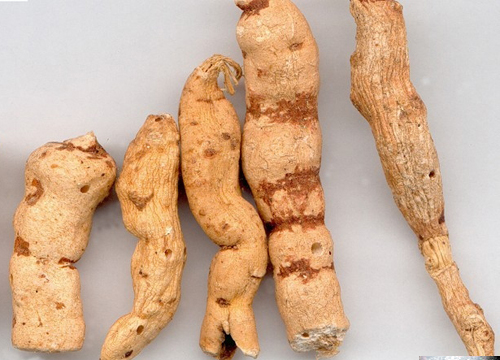The source is from the root tuber of Euphorbia Kansui T.N. liou ex T. P. Wang, family Euphorbiaceae. The medicinal material is mainly produced in the areas of Shaanxi, Shanxi, and Henan, etc., dug and collected in the end of autumn or at the early stage of spring, rind it, and then dried in the sun and prepared with vinegar for being used.
Medicinal Properties:
Bitter and sweet in flavor and cold in nature, toxic and attributive to the lung, kidney and large intestine meridians.
Actions:
Purge the bowels to eliminate the retention of phlegm, induce diuresis to relieve edema.

Application
1. It can be used for edema, tympanites and localized fluids in the chest and hypochondrium but the healthy qi is not weakened since it has violent effect in purging and eliminating the retention of phlegm. It can be powdered singly for oral use or used together with Daji (Radix Euporbiae Pekinensis ) , Yuanhua ( Flos Genkwa ), etc., such as Shizao Tang (Decoction) ; for the syndrome resulting from water retention and heat accumulating in the thorax, it is used together with Dahuang (Radix et Rhizoma Rhei ) and Mangxiao (Natrii Sulfas), such as Da Xianxiong Tang (Decoction). Now it is mostly used for ascites due to cirrhosis, exudative pleurisy and intestinal obstruction, etc..
2. For epilepsy of wind-phlegm type, it can be pounded into powder that is added to a pork heart to be stewed, and then it is prepared with Zhusha (Cinnabaris) into pills for oral use, such as Suixin Dan (Pill).
3. For swelling and ulcer on the body surface (pyocutaneous) disease, the powder is mixed with water for external application.

Usage and Dosage:
0.5 - 1.5 g is added to pill or powder form for oral use, just right amount of the raw is for external use and it must be prepared with vinegar for oral use so as to decrease the toxicity.
Notes:
Contraindicated in pregnant women or the weak, it is incompatible with Gancao (Radix Glycyrrhizae).







